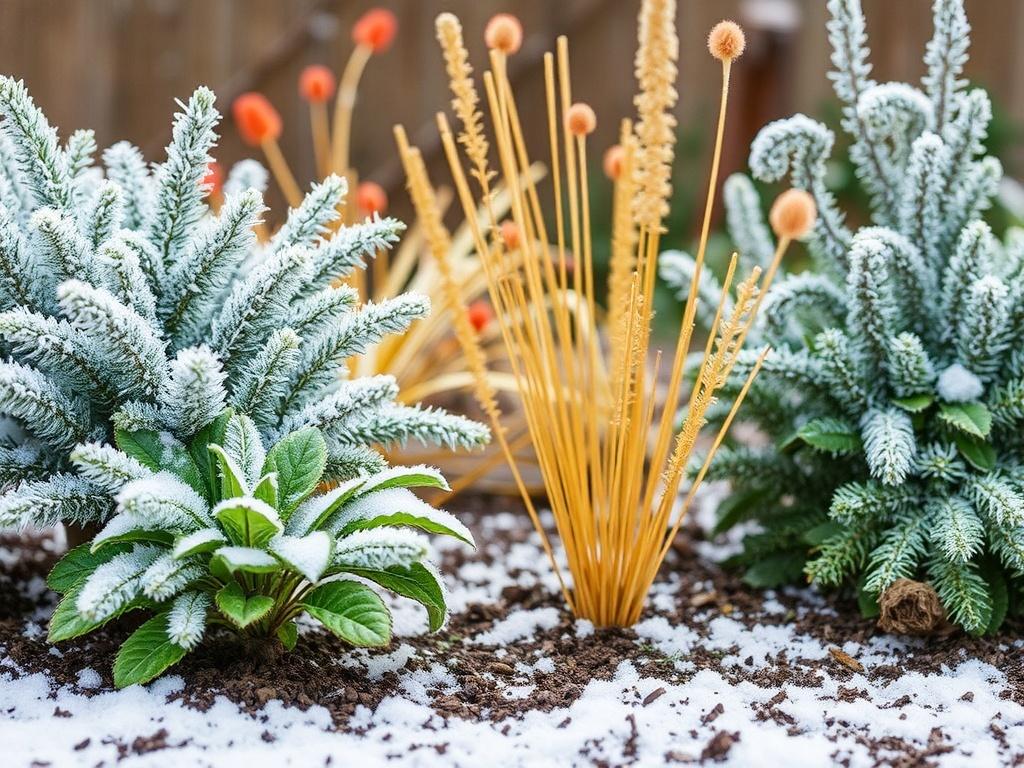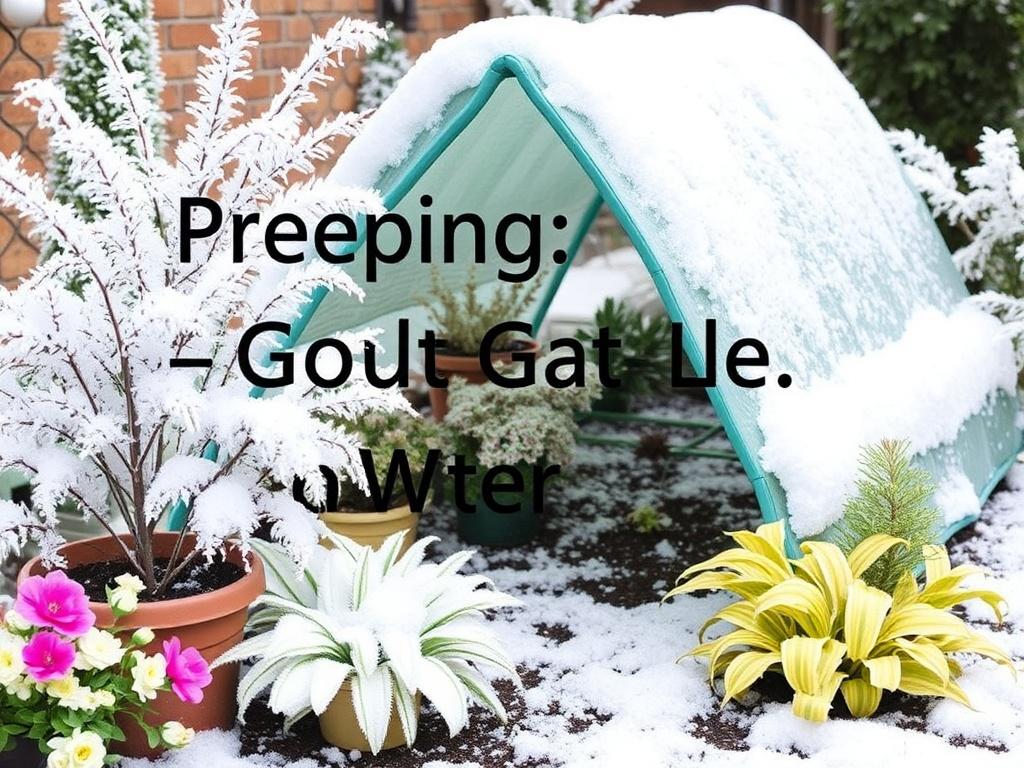Gardening can feel like a year-round conversation with nature. As the temperatures dip and daylight shortens, that conversation changes tone: it’s no longer about growth and abundance so much as protection and preparation. Préparer son jardin pour l’hiver en 5 étapes — preparing your garden for winter in five steps — means setting yourself up for a healthier, happier garden come spring. In this article I’ll walk you through practical, down-to-earth steps that cover plants, soil, tools and planning. Whether you have a tiny balcony or a full backyard, these steps will help you protect what you love and give your garden the best possible head start when the thaw comes.
You don’t need to be an expert or buy expensive gear to winter-proof your outdoor space. A little knowledge, a clear plan, and some timely action will do wonders. Think of winter prep as an investment: the time you spend now will return as stronger plants, fewer pests, richer soil, and a calmer start to the next growing season. I’ll share checklists, simple techniques, and common mistakes to avoid. Let’s take it step by step, with friendly, practical advice you can actually use.
Why prepare your garden for winter?
It’s tempting to let the garden sleep and crawl into hibernation yourself, but stepping in now prevents many common problems. One of the biggest benefits is avoiding damage: frost, freeze-thaw cycles, rodents, and soggy soil can all harm plants and structures. When you prepare, you reduce plant stress and disease, protect delicate specimens, and prevent soil erosion. You’ll also make spring easier — fewer emergency fixes, less cleanup, and faster growth. On top of that, winter-prepped compost and protected beds mean spring planting can start earlier with better results.
Preparation also gives you a chance to evaluate what worked and what didn’t. Winter is quiet but not empty; it’s the best time to plan, reorder, and dream. If you like a methodical approach, setting up a simple five-step plan keeps the process manageable: clean and clear, protect the soil and plants, prune and shape responsibly, winterize tools and structures, and plan and plant for next season. Each step is practical and will set your garden up for success.
Step 1 — Clean and Clear: remove debris, tidy beds, and compost wisely
The first step is to clean and clear. This is about removing the obvious clutter but also making smart decisions about what to leave and what to compost. Clear dead annuals, spent vegetable plants, and fallen fruit. These items can harbor pests and disease if left to rot in place. At the same time, leave some seed heads and untidy patches if you want to feed overwintering birds and beneficial insects. It’s a balance between hygiene and habitat.
Start by collecting obvious debris like fallen branches, spent blooms, and old stakes. Cut back annuals to the ground after the first frost. For perennials, remove only the parts that are diseased or likely to attract pests; many perennials provide structure and winter interest that can be left until spring. When clearing beds, rinse tools or disinfect pruners between diseased plants to prevent spreading fungi.
Use compost thoughtfully. Healthy plant material can become gold in your compost pile, but diseased plants and invasive weed roots should go to the green waste bin or be burned if local regulations allow. If you’re unsure about a plant’s health, err on the side of disposal. Keep a separate compost container for woody material and another for soft greens; this helps manage decomposition rates and yields better compost for spring.
Practical cleaning checklist
- Remove fallen fruit and vegetable debris.
- Cut back annuals; leave healthy perennial structure.
- Remove invasive weeds, root systems, and bindweed.
- Clean and disinfect tools after working on diseased plants.
- Bag or compost non-diseased material; dispose of diseased plants separately.
Tools and timing
Early fall is ideal for most cleaning tasks: after the first hard frost for tender crops, but before prolonged wet weather makes groundwork difficult. Have a rake, pruning shears, loppers, a garden cart or wheelbarrow, gloves, and sturdy bags for green waste. If you use power tools, keep them clean and charged so they’re ready for winter maintenance (more on that in Step 4).
Step 2 — Protect the soil and plants: mulch, cover crops, and insulation
Protecting soil and plants is the heart of winter preparation. Cold and constant wet can compact or erode soil and damage plant roots. Mulch acts as a thermal blanket, regulates moisture, and prevents frost heaving. Cover crops add organic matter and reduce erosion, while targeted insulation helps tender plants survive.
Mulching is one of the easiest and most effective steps. Apply a two- to four-inch layer of organic mulch (straw, chopped leaves, wood chips, or shredded bark) around perennials and garden beds. Keep mulch a few inches away from plant crowns to avoid rot. For vegetable beds, a mulch layer after final harvest can protect soil structure and reduce nitrogen loss.
Cover crops like clover, winter rye, and vetch are a living strategy to protect soil over winter. They prevent erosion, sequester nutrients, and improve soil structure when turned under in spring. If you don’t have time to sow a cover crop, a thick straw mulch can provide similar erosion control, though without the nitrogen-fixing benefit.
Mulch types and uses
| Mulch Type | Best For | Pros | Cons |
|---|---|---|---|
| Straw | Vegetable beds, pathways | Light, insulating, easy to remove in spring | May contain weed seeds if not clean |
| Leaves (chopped) | Perennials, beds | Free, builds organic matter, breathable | Can mat if not shredded |
| Wood chips | Around trees, shrubs, perennial borders | Long lasting, attractive | Slow to break down, can tie up nitrogen initially |
| Compost | Topdressing beds, soil amendment | Nutrient-rich, improves structure | Expensive if bought; needs spreading |
Insulating plants and containers
Pots and containers need special attention: roots are exposed on all sides and can freeze quickly. Move containers to a sheltered location against a wall, group them together, and raise them off cold surfaces with pot feet. Insulate with bubble wrap, burlap, or horticultural fleece wrapped around pots. For tender shrubs, wrap the crown and use burlap to protect against desiccating winds. Consider temporary cold frames for small, tender plants.
Step 3 — Prune and shape: cut back, but don’t overdo it

Pruning is often misunderstood. Some plants benefit from a late-fall trim; others should wait until late winter or early spring. The wrong cut at the wrong time can invite disease or reduce next year’s blooms. The key is targeted pruning: remove deadwood, thin overcrowded branches, and shape where necessary, but avoid heavy pruning of spring-blooming shrubs and trees now.
For roses, remove diseased canes and trim lightly. Many roses can be left until early spring for a more thorough prune. Fruit trees benefit from removing damaged limbs now, but major structural pruning is best in late winter when the tree is fully dormant. For perennials, cut back only the dead foliage; measurable structure like seed heads can be left to provide shelter for beneficial insects or to collect snow for insulation.
Pruning: what to cut now vs later
- Cut now: dead or diseased wood, broken branches, crossing limbs, invasive shoots.
- Wait until late winter/early spring: spring-flowering shrubs (e.g., lilac, forsythia), heavy structural pruning of trees, heavy pruning of roses (except diseased parts).
- Stagger pruning: light fall pruning for shape and safety, deeper pruning in dormancy.
Pruning tools and technique
Good pruning starts with sharp, clean tools. For small stems, use bypass pruners; for thicker branches, loppers or a pruning saw. Make clean cuts at a slight angle and avoid tearing bark. For larger cuts, follow the branch collar to encourage proper wound closure. After pruning diseased branches, sterilize your tools with rubbing alcohol or a 10% bleach solution to prevent spreading pathogens.
Step 4 — Prepare tools and structures: winterize irrigation, store tools, and protect infrastructure
A well-prepared garden includes your tools and structural elements. Winter is a great time to service tools so they’re ready for spring. Drain irrigation systems and remove hoses; freezing water expands and can bust pipes and fittings. Protect raised beds, trellises, and greenhouses from high winds and heavy snow.
Start by blowing out drip irrigation lines and draining hoses. If you have an automatic sprinkler system, follow the manufacturer’s winterization instructions: typically this means draining lines or using compressed air to remove remaining water. Empty and store hoses, faucets, and portable water features. For rain barrels, disconnect them and either empty or insulate them to prevent rupture.
Store hand tools in a dry, sheltered area. Clean soil from shovels and forks, sharpen blades, oil moving parts, and apply a light coat of oil to prevent rust. Clean mower decks and service the engine before storing, or follow the seasonal instructions for battery-powered equipment. Cover or move delicate garden furniture, and anchor or store lightweight items that could be blown away.
Tool maintenance checklist
| Task | Why it matters | When to do it |
|---|---|---|
| Clean and sharpen pruners | Clean cuts reduce plant stress and disease | After pruning, before storing |
| Drain irrigation and hoses | Prevents frozen pipes and split fittings | Before first hard freeze |
| Service lawn mower | Prolongs life and reduces spring startup work | After last mow, before storage |
| Store or protect outdoor furniture | Prevents weather damage | Before storms and freezing temperatures |
Protecting structures and small installations
Greenhouses and cold frames are valuable in winter. Reinforce panels and check seals to keep critters out. For raised beds, consider removable covers or cloches for early-season planting in spring. If you have a pond, install a de-icer or floating device to maintain a hole in the ice for gas exchange and to protect fish. Keep an eye on fences, arbors, and trellises; loosened screws and emerging rot are easier to fix now than after a heavy winter event.
Step 5 — Plan and plant for next season: bulbs, soil amendments, and a spring-ready schedule
Winter is the gardener’s planning season. Planting bulbs and planning next year’s layout in late fall makes for an exciting winter hobby and yields immediate results come spring. Many bulbs need that cold period to bloom — tulips, daffodils, crocuses, and hyacinths are planted in fall for spring glory. Fall is also a great time for soil tests and amendments; adding compost, lime or other amendments now gives time for the soil to rebalance.
Create a simple planting map and a to-do schedule: what will go where, which beds need more sunlight, which plants should be moved or divided. Order seeds and catalogues now so you can compare varieties and avoid delays in early spring. If you’re short on space, plan a rotation for containers and start seeds indoors in late winter.
Bulbs and early-season planting guide
- Plant bulbs like tulips, daffodils and crocus in mid to late fall before the ground freezes.
- Choose sunny spots for most bulbs; plant at approximately three times the bulb height.
- Use well-draining soil and add a little bone meal or bulb fertilizer at planting time.
Soil testing and amendments
A soil test in late fall or early winter gives you a baseline for nutrient levels and pH. Based on results, you can add lime to raise pH or sulfur to lower pH, and incorporate compost to improve texture and fertility. Heavy amendments like gypsum or significant topsoil additions can be done in late fall; they’re less likely to compact in wet conditions and will mellow over winter. If you work amendments into existing beds, do so when the soil is not waterlogged to avoid compaction.
Extra tips: wildlife, pests, and small-space strategies
Winter preparation also means thinking about wildlife and pest management. Rodents will look for sheltered nooks; tidy storage and mulching wisely reduces hiding places. If leaving leaf piles for overwintering insects, keep them away from the house foundation and pathways. Provide bird feeders and water sources in winter; feathered friends help reduce pest populations come spring and provide lovely activity during quiet months.
For small spaces or balcony gardens, prep is about mobility and insulation. Group containers together, insulate them, and use cold-hardy varieties where possible. Vertical supports and trellises can be wrapped with frost cloth if they host sensitive plants. Even in a small balcony, a covered box for bulbs or a few pots under a sheltered eave will give you an early spring display.
Pest and rodent prevention
- Store seed and soil bags in sealed containers to avoid mice.
- Remove dense ground cover and thick leaf piles close to foundations.
- Use wire mesh around the base of raised beds if rodents are a problem.
- Install birdhouses and feeders to attract beneficial predators.
Small-space winter strategies
Containers: move them to the warmest, sunniest spot and wrap or insulate. Raised planters: add a thick layer of compost and mulch. Balconies: use thermal mass like water-filled containers to moderate temperature swings. For renters, use portable covers and small cold frames you can take with you. The principles are the same — protect roots, prevent waterlogging, and reduce exposure to hard freezes.
Common mistakes and how to avoid them

A few missteps can undo a lot of effort. Here’s how to avoid the most common winter preparation mistakes. First, don’t pile mulch right against plant stems — that can cause rot and invite pests. Second, don’t prune spring-flowering shrubs in late fall; you’ll remove next season’s flowers. Third, don’t forget to drain irrigation lines; frozen water can be costly. Finally, don’t discard everything indiscriminately: some debris is good habitat and compost feed, and some should be disposed of to reduce disease pressure.
Monitoring is important too: winter is not a total shutdown. Walk through your garden every few weeks if possible. Note any damage from frost, wind, or animals. Early detection of problems like collapsed branches or standing water allows you to take action before spring arrives.
Quick mistakes checklist
- Mulching too close to plant stems — leave a gap.
- Pruning spring bloomers in fall — wait until after bloom.
- Failing to protect containers from freeze — group and insulate.
- Leaving irrigation full of water — drain and store hoses.
- Composting diseased plants — dispose of them separately.
Seasonal calendar: what to do, month by month
Having a simple timeline keeps tasks manageable. Below is a compact month-by-month list to guide your winter prep. Adjust dates for your hardiness zone and local conditions, but use this as a basic framework.
| Month | Key Tasks |
|---|---|
| September | Finish warm-season crops, start leaf collection, plant garlic and shallots in cool climates. |
| October | Plant bulbs, clean beds, start mulching, drain irrigation systems if early frost expected. |
| November | Final clean-up, protect tender shrubs and containers, store tools, service equipment. |
| December | Monitor for storm damage, maintain bird feeders, plan for spring, check stored equipment. |
| January–February | Order seeds, prune select trees, start prepping seed trays indoors late in February. |
Real-life examples: small garden, suburban yard, and urban balcony
Different spaces need different solutions. In a small garden, focus on soil health and compact storage: mulching and a single compost bin can transform a modest plot. In a suburban yard with lawn and beds, prioritize irrigation winterization and sheltering shrubs; a pond or water feature will need special care. On an urban balcony, mobility and insulation are king — wrap pots, store fragile tools inside, and use wall-mounted planters that are easier to manage.
Small garden approach
- Use leaf mulch to build soil and protect beds.
- Plant bulbs in small drifts for maximum impact.
- Create a compact tool station for cleaning and sharpening gear.
Suburban yard approach
- Service the irrigation system and blow out lines.
- Mulch around trees and shrubs, keeping mulch off trunks.
- Protect garden structures from heavy snow with bracing.
Urban balcony approach
- Group containers against a wall and insulate with bubble wrap.
- Move small pots to a protected corner during storms.
- Use cold-hardy varieties and plan for early-spring sowing indoors.
Resources and supplies checklist
Before you begin, gather the basic supplies. Having everything on hand saves time and makes the job feel more satisfying. Here’s a simple list to get you started.
- Rake, pruning shears, loppers, pruning saw
- Wheelbarrow or garden cart
- Mulch (straw, wood chips, shredded leaves)
- Compost or soil amendments
- Burlap, frost cloth, bubble wrap for pots
- Garden gloves, storage bins for tools
- Disinfectant for tools (rubbing alcohol or a bleach solution)
Final thoughts before winter settles in

Preparing your garden for winter is both practical and rewarding. It’s a chance to protect your plants, sharpen your tools, and plan for a better growing season. Think of these five steps as a rhythm: clean and clear, protect soil and plants, prune with care, winterize tools and structures, and plan and plant for the season ahead. With a little work now, you’ll save time and heartache later, and you’ll wake up to a garden that emerges from winter ready to thrive.
Conclusion
Preparing your garden for winter doesn’t have to be overwhelming — follow these five practical steps and tailor them to your space and climate. Clean and clear beds to prevent disease, protect soil and plants with mulch and covers, prune wisely, winterize tools and infrastructure, and plan or plant bulbs and cover crops for spring. With simple tools, a clear checklist, and a bit of seasonal foresight, you’ll protect what you’ve grown and build momentum for the next season. Take your time, enjoy the quieter months, and know that every small action now pays off in a stronger, healthier garden when spring arrives.



